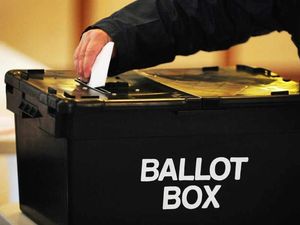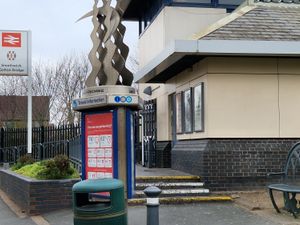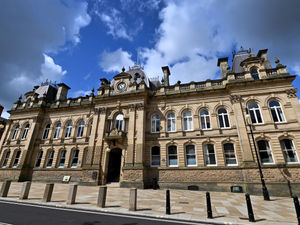Sandwell turned away most voters for lack of photo ID out of all metropolitan council areas
Sandwell Council turned away the most number of people for lack of photo ID within all of England’s metropolitan district councils, preliminary figures about voter turnout show.

Voters have for the first time been legally obliged to produce proof of identity in order to cast a ballot — a move criticised by campaigners as “disproportionate” in view of historically low levels of in-person electoral fraud.
A total of 1,135 people were turned away by Sandwell Council at the ballot box, according to figures compiled by David Cowling, a political opinion polling specialist at Survation and former editor of BBC Political Research unit.
Out of the 1,135 who were initially turned away by Sandwell council, 795 returned with the correct photo ID – 340 voters did not return.
Walsall Council came second in the table, turning away 767 voters – 473 returned with the correct photo ID, while 294 voters did not return.
Around 53,288 people voted in this year’s local elections in Sandwell. The number turned away equals 0.64 per cent.
Nationally, more than one per cent of voters were turned away from polling stations because of ID requirements at the local elections, according to Democracy Volunteers.
The group of election observers, said it conducted snapshot surveys in 118 councils on May 4. The group said observers saw 1.2 per cent of those attending polling stations turned away because they lacked the relevant ID, or were judged to not have it.
Of those turned away, 53 per cent were identified by observers as appearing to be “non-white”. The group said its teams saw others allowed to vote despite not having ID.
While the figures are preliminary - as The Electoral Commission, Britain’s elections watchdog, will not release official figures on turnout for weeks - campaigners argue the requirement to show an ID card may have reduced participation in May’s local elections in England.
The Electoral Reform Society, which has strongly opposed the introduction, urged ministers to rethink the new law.
Jess Garland, director of policy at the Electoral Reform Society, previously said there had been “countless examples” of disenfranchisement, “from people caught out by having the wrong type of photo ID to others turned away for not looking enough like their photo”.
“One voter turned away is one voter too many,” she added.
Labour had previously said it may “prove impossible” to know how many people are turned away at the local elections for not having identity documents, after it emerged officials outside polling stations would not count those unable to vote.
Some venues in England placed other staff outside as so-called ‘greeters’, who reminded people about the need for ID before casting their vote.
The greeters did not note down the number of people who left when told about the requirements, the Electoral Commission has confirmed, meaning the total number of potentially disfranchised voters may never be known.
Sandwell returning officer Shokat Lal said: “Around 1,300 Sandwell residents applied for a Voter Authority Certificate (VAC) because they did not have any accepted photo ID. We understand this to be one of the highest figures for VACs nationwide and shows there was a high level of awareness of the new requirements.
“The vast majority of people, 36,889 – more than 99 per cent – who chose to vote at a polling station in Sandwell provided an accepted form of photo ID and were issued with a ballot paper. A ballot paper cannot be issued legally under the new legislation without showing accepted ID.
“Most people were aware they needed accepted photo ID and anyone who didn’t was encouraged to return later with their ID so they could vote.
“The 340 people who came to vote at a polling station in Sandwell but did not provide an acceptable form of photo ID is the equivalent of fewer than three people per polling station.
Mr Lal, who is also the chief executive of Sandwell Council, said the council carried out a “comprehensive campaign to make sure people were aware of the new legislation” that requires voters to show an accepted form of photo identification in order to vote at a polling station.
“It is still very early days for analysis and comparisons in relation to Voter ID as the data is difficult to compare when local authorities took different approaches," he said.
“Where a polling station had a member of staff positioned at the entrance advising on Voter ID, any voters turned away at that point would not have been recorded. Sandwell recorded the data at the issuing desk to enable all voters to be recorded who did not have ID or attended with an incorrect form of ID.”
Estimates of voters without eligible ID for May’s local elections across the country range from 925,000 to two million. The Government offered a free voter authority certificate to people applying online who lacked another approved document, but only 89,502 had done so by the April deadline.
At present, 22 forms of ID meet the eligibility criteria, including passports, driving licences and disability blue badges.



